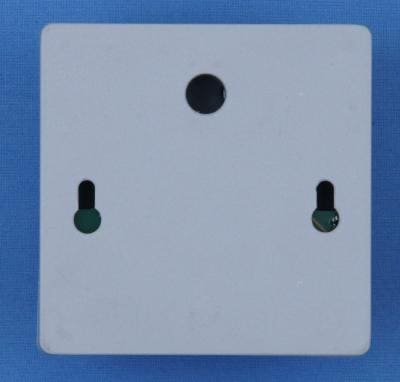CO2 Meter — LB-853 Carbon Dioxide Concentration Regulator

- function: CO2 concentration meter
- carbon dioxide concentration regulator
- measurement: CO2 (carbon dioxide) concentration
- measurement method CO2 NDIR
- measurement result outputs:
- analogue 0–10 V
- 2 relays
Description of CO2 regulator
The basic function of the LB-853 meter is the carbon dioxide concentration measurement in the atmosphere. Additional functions of the CO2 meter include: signalisation when the set thresholds are exceeded, regulation connected with the CO2 measurements.
The LB-853 CO2 meter is a stationary device of small dimensions, powered from an external power supply source. The meter features modern design, based on the NDIR method (NDIR — non-dispersive infrared). It measures the damping of IR radiation of a specific wavelength emitted by the measured gas; this damping is dependent on the carbon dioxide content in the measured gas. The NDIR method provides accurate and stable measurement results and many years of trouble-free operation. The CO2 measurement sensor is located inside the instrument, and the measured air may be supplied convectionally to the inside of the instrument, through the openings in the housing.
This carbon dioxide meter features a 0–10 V voltage output, proportionally to the measured CO2 concentration, which can be used for many applications. Two relay outputs of the CO2 regulator may be used to signal when the alarm states are exceeded or for regulation in the on/off mode (e.g. ventilation). The lamps give information about the current CO2 concentration level (low/average/high). The instrument is programmed with two thresholds controlling the operation of relays and the LED lamps. By default, for concentrations below 1,000 ppm, a green lamp lights, which means a low concentration — the relays are switched off; for the values in the range of 1,000…2,000 ppm, a yellow lamp lights up (average concentration) — the first relay is switched on; and for a concentration over 2,000 ppm — a red lamp lights up (high concentration), and both relays are switched on. According to the client’s individual requirements, t various control thresholds for the CO2 regulator may be set within the range of 0…10,000 ppm.
The CO2 sensor can be operated by the user to calibrate the concentration measurement. When the cover is removed, the jumpers are accessible. When the jumper designated with “400” (the shorting should last at least 8 seconds) is shorted, the meter’s responses will be calibrated to the value of 400 ppm. On the other hand, when the jumper designated with “0” is shorted, the responses will be reset to 0 ppm. In order to conduct the correct calibration, the meter must be introduced in an atmosphere with a suitable CO2 concentration (400 or 0 ppm), wait a moment for stabilization of the measurement results and short-circuit a given jumper.
The CO2 regulator may be installed with the use of 2 screws:
using holes in the bottom (v1) part of the housing or using additional
metal strip (v2) — the option should be selected when order is placed.
The operating environment of the instrument is not aggressive. When the device is flooded or if water condenses inside the device, a malfunction may occur.


Alternatives
Alternative CO2 meter: LB-852. LB-854.
Applications
The meter may be, for example, used for:
- CO2 concentration measurement in a public building
- gas emissions control in industry;
- monitoring for safety reasons;
- Operation monitoring of ventilation systems in various facilities (e.g. offices, livestock buildings; details in an additional description.
Technical Data
| CO2 measurement | |
|---|---|
| CO2 sensor type | NDIR, built-in |
| Measurement range of the CO2 volume content | 0…10,000 ppm (0…1%) |
| CO2 measurement accuracy | ±5% of current response and ±100 ppm |
| Standard range of analogue output 0…10 V | 0…10,000 ppm |
| Heating-up time of the meter after powering up | 1 minute |
| Outputs | |
| Analogue 0…10 V | Not insulated, min. load bearing capacity: 10 kOhm, range of 0…10,000 ppm |
| Relay | 2 outputs, 1A/250V, resistance load, alarm or regulation |
| Operation conditions | |
| Operating temperature range | 5…50°C |
| Air relative humidity range | 10…80% — recommended continuous operating conditions, 5…90% — admissible temporary conditions (without water condensation) |
| Remaining parameters | |
| Power supply | 24V AC (15…30 ACV) or 20…45 DC |
| External dimensions | 84 x 84 x 36 mm |
| Weight | approx. 150 g |


